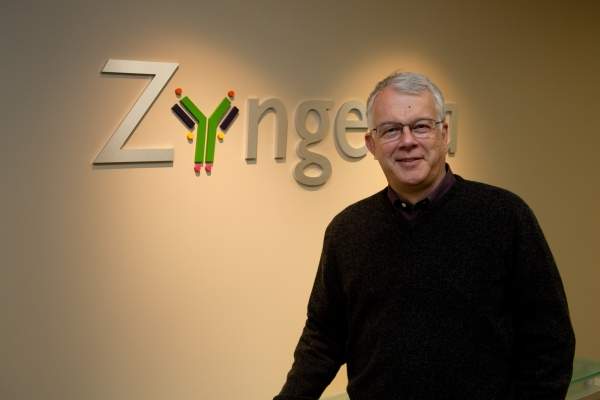
Big Pharma has never been renowned for innovation. Rather, large pharmaceutical companies have traditionally focused on developing and testing conventional therapeutics, such as small molecule drugs and monoclonal antibodies, building and investing in the substantial infrastructure required to support these efforts.
"They are best known for their sales and marketing expertise, not for their innovation and development of novel technologies," said Edward Lanphier, president and CEO of biotherapeutics company Sangamo BioSciences Inc.
"Historically, development of new technologies and novel platforms has been the domain of small biotech companies."
Flexible and quick on their feet: advantages of pharmaceutical SMEs
As medicine advances and the mapping of individuals’ genomes becomes increasingly commonplace, leading to the development of therapies tailored to each patient’s genetic make-up and disease, small pharma’s flexibility, creativity and scientific expertise is set to become key to the development of the pharmaceutical industry.
"There is an increased demand for innovative medicines and we expect that the demand for personalised medicines will create numerous opportunities for companies like Sangamo, which are poised to exploit these opportunities," Lanphier confirmed.
"Small biotechs are usually very lean and can move more adroitly and efficiently, and at less cost, during the discovery and initial development of new drugs," said Peter Kiener, CEO of biotherapeutics company Zyngenia, in agreement.
How well do you really know your competitors?
Access the most comprehensive Company Profiles on the market, powered by GlobalData. Save hours of research. Gain competitive edge.

Thank you!
Your download email will arrive shortly
Not ready to buy yet? Download a free sample
We are confident about the unique quality of our Company Profiles. However, we want you to make the most beneficial decision for your business, so we offer a free sample that you can download by submitting the below form
By GlobalData"They are also more willing to take on risk and can explore new, unproven opportunities that have the potential to be game changers if they are successful."
See Also:
"They are not constrained by the bureaucracy that characterises large organisations, which allows a level of creativity that is often constrained in large companies," added Tom Saylor, chairman of EuropaBio’s SME Platform and CEO of formulation technology company Arecor.
Better together: the importance of drug development partners
Already, there are a significant number of potentially game-changing drugs being developed by SMEs. US-based Zyngenia, for example, is working on combining the abilities of multiple biologic drugs into one drug, with the aim of addressing conditions such as autoimmune disease and cancer that are not adequately catered for by the medicines which are currently available.
"We can make molecules that have multiple activities and that also have good drug-like properties that will enable their administration to patients," said Kiener.
"We’ve also found that, against certain disease targets, combinations of activities into one molecule could create totally new drugs where the efficacies would be markedly better than just a mixture of the individual constituent drugs."
Over the next five years, the growing company’s initial forays will be in autoimmune disease and cancer, but Kiener predicted that by 2016, with the help of development partners, Zyngenia will also have moved into other disease areas. For the company’s CEO, the importance of these development partners cannot be emphasised enough.
"In my opinion partnerships between smaller and large companies offer the best approach. To bring novel therapeutics to market, Big Pharma’s scientific expertise, clinical, developmental and regulatory experience and financial wherewithal are usually needed, so, at Zyngenia, we view opportunities to partner our knowledge, technology and drug candidates with large pharma as a win-win-win (for us, our development partners and the patients in need)."
Go forth and multiply: value of having more than one development partner
Lanphier of Sangamo BioSciences, which is developing zinc finger DNA-binding protein (ZFP) technology to provide a functional cure for HIV / AIDS and genetic cures for monogenic diseases such as haemophilia, is similarly keen to emphasise the importance of partnerships for small biotech companies.
"The economic environment for small biotech companies has been difficult for the past three to four years and doesn’t appear to be improving significantly," he noted.
As such, Sangamo has formed several partnerships, across multiple industries, to allow the company to develop its potentially groundbreaking technology.
"In February 2012, we entered into a significant, strategic collaboration with Shire Plc to develop ZFP Therapeutics for haemophilia and other monogenic diseases.
"Sangamo is responsible for all research activities and Shire is responsible for clinical development and commercialisation of products generated from the research program," Lanphier explained.
"We also have strategic partnerships with companies in non-therapeutic applications of our technology, including Sigma-Aldrich Corporation for research applications and transgenic animals and cell lines, and Dow AgroSciences for plant agriculture applications of ZFPs."
Looking further to the future, Sangamo has a robust business development plan for SB-728-T, a drug, which, the company has already demonstrated in clinical studies, meets the key requirements to justify development as a ‘functional cure’ for HIV.
"It is now being evaluated in two ongoing Phase II clinical trials and the path of further clinical development will be ‘data-driven’," explained Lanphier.
"With positive clinical data, we intend to move SB-728-T through later stage trials and commercialisation with a pharma partner."
Formulation for success: what gives Big Pharma the competitive edge?
For UK-based Arecor, which develops stable aqueous formulations of proteins, peptides and vaccines for major pharmaceutical companies, working closely with their colleagues in Big Pharma is even more crucial to success than it is for companies such as Sangamo and Zyngenia.
CEO Saylor, also chairman of EuropaBio’s SME Platform, is only too aware of the challenges SMEs face, particularly in Europe, as they attempt to develop innovative, game-changing drugs. "Europe suffers much greater fragmentation of capital, labour and end-markets for pharmaceutical development than North America, meaning that SMEs tend to ‘sell out’ earlier than their North American counterparts and, therefore, do not always achieve their value potential," he said.
"Recognising the difficulty in raising capital for drug development, Arecor was looking for opportunities where we could build cash flow early by providing services to major pharmaceutical companies but still with the potential of enjoying higher value based upon licensing our technology."
Arecor is therefore based on an enabling technology rather than a drug. "Formulation offers an attractive pathway to differentiating and improving the administration of biologicals," Saylor noted.
"Moreover, Arecor has achieved much higher concentrations of drug actives leading to more convenient dosage forms. The company can also very significantly improve the heat stability of peptides, proteins and vaccines, potentially eliminating the cold chain and need for refrigeration. All of these advantages can translate into competitive advantages for the products employing Arecor technologies."
For Saylor, building the confidence of Arecor’s pharmaceutical partners has been the company’s greatest challenge. "Going forward, we still depend on the timing of major license deals to ensure the sustainability of the company," he explained.
Joint ventures: the future of the pharmaceutical industry
Small biotech is undoubtedly the source of the majority of innovation in the fast-evolving pharmaceutical industry, but these small firms simply can’t do it on their own.
Partnering with pharmaceutical giants, in order to make the most of their sales, marketing, distribution and regulatory expertise, is absolutely essential to ensure that the innovative medicines developed by the rapidly-growing number of specialist biotechnology companies are brought to the patients who need them most.







